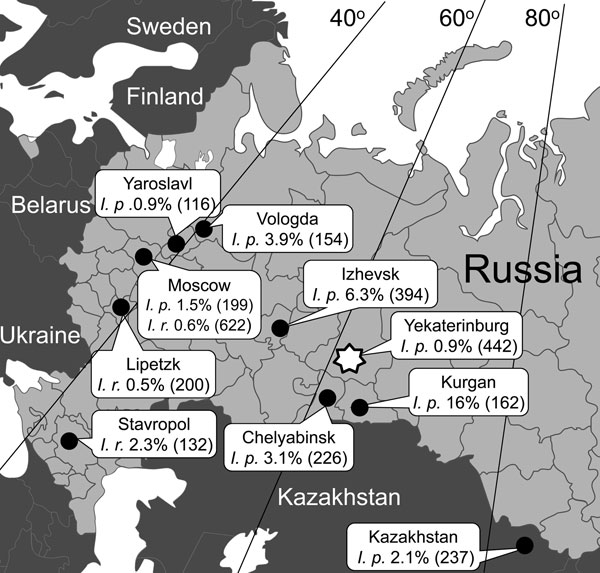Volume 17, Number 10—October 2011
Research
Humans Infected with Relapsing Fever Spirochete Borrelia miyamotoi, Russia
Figure 1

Figure 1. Percentage of Ixodes persulcatus (I. p.) and I. ricinus (I. r.) ticks infected with Borrelia miyamotoi in Russia. The number of ticks that were tested is given in parenthesis. Star indicates study location of human B. miyamotoi infection.
Page created: September 20, 2011
Page updated: September 20, 2011
Page reviewed: September 20, 2011
The conclusions, findings, and opinions expressed by authors contributing to this journal do not necessarily reflect the official position of the U.S. Department of Health and Human Services, the Public Health Service, the Centers for Disease Control and Prevention, or the authors' affiliated institutions. Use of trade names is for identification only and does not imply endorsement by any of the groups named above.